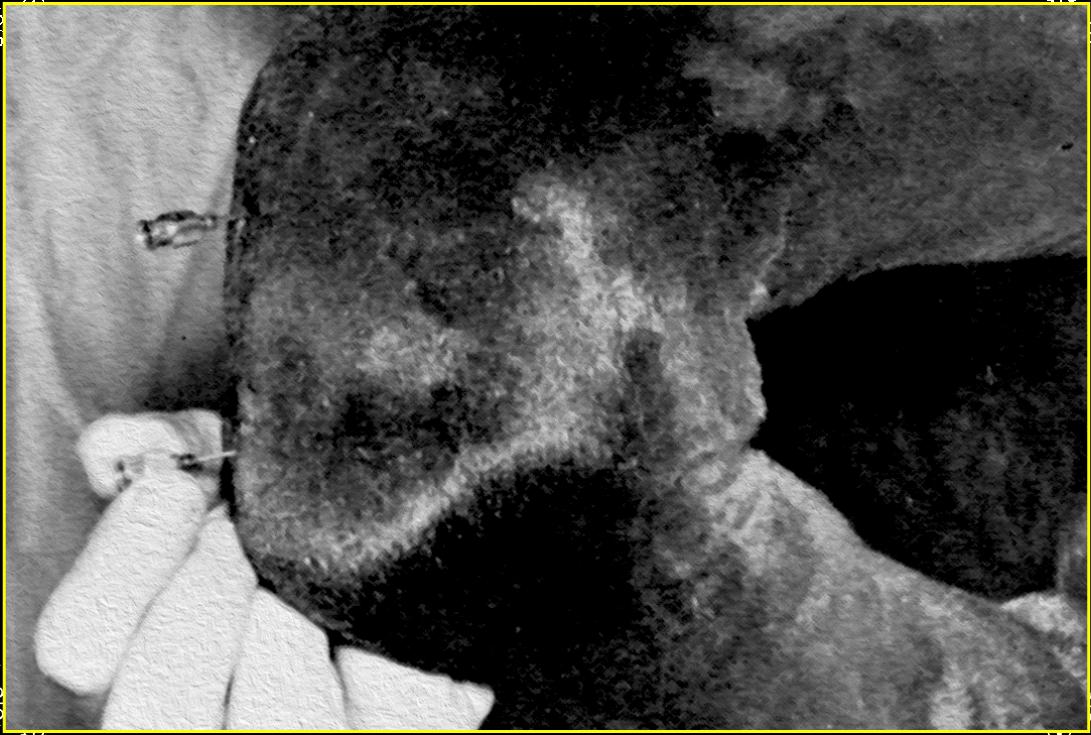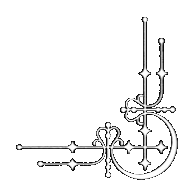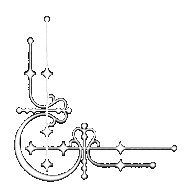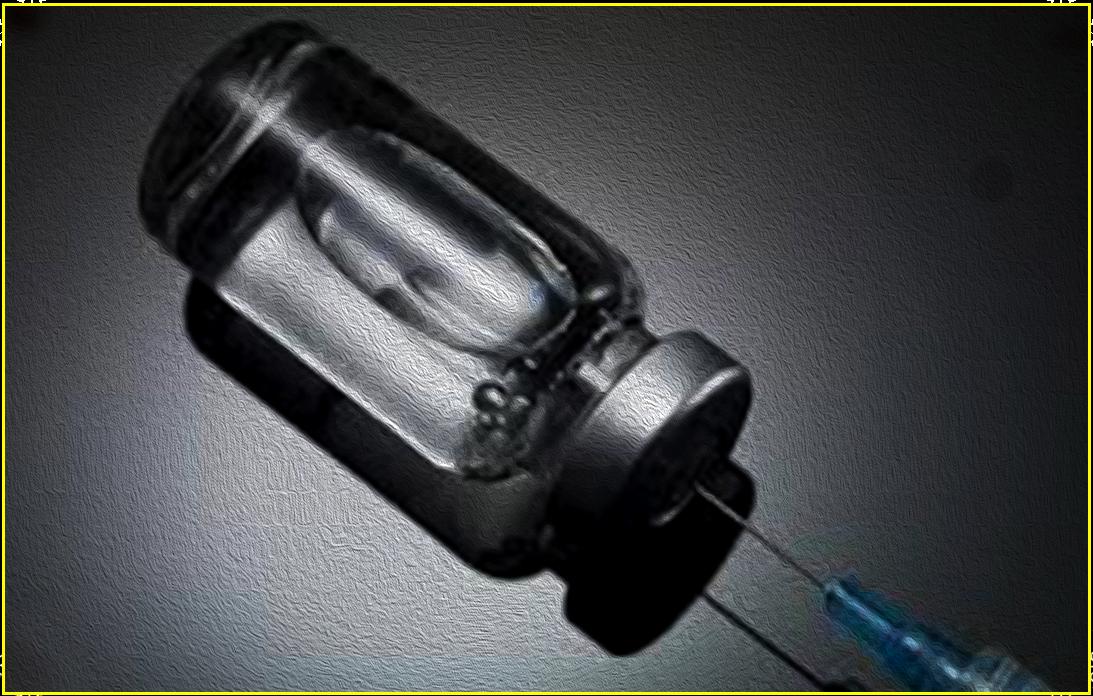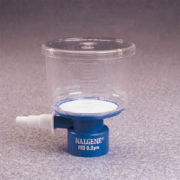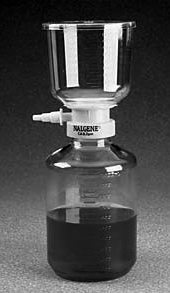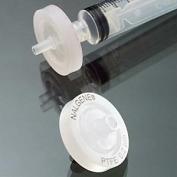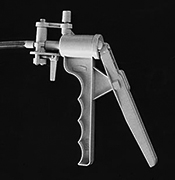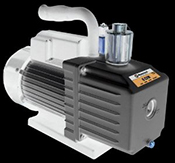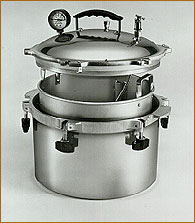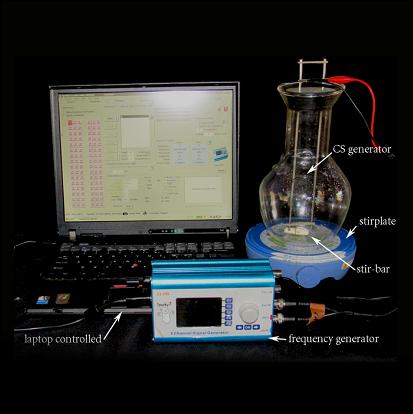Back in my younger days training racehorses, I would never have tried to make an injectable quality remedy, but I have become older and a bit wiser to such things. It can be done with some care. To make this formula properly, it will involve investing in some laboratory equipment. Unfortunately there are no short cuts. I have found it is always best to use the freshest made formula for the most potency which is why one should probably make it only when needed. Plus if Hydrogen peroxide is added, it is a must to make it fresh and use it within days! With the same equipment, you can also easily formulate IV quality Vitamin C and other injectables. Ebay is a good place to find much of the below.
Materials needed:
1. A colloidal silver generator. In the past, I used the silver puppy brand pictured to the right. Now, Now I employ the Spooky2 CS system which implements a 5 Hz triangular wave into the low DC voltage for optimum colloidal silver formula as pictured below.

2. Autoclavable graduated media bottles at 500 ml capacity plus open-ended caps with silicone septums for sterile needle access---though one can use the plain cap, if you want to reuse the sterile water bottle. I like the GL45 thread on them so that I can screw on the below described filtration systems. These can either be used as the final solution treatment bottle with the rubber septum or as a mixing bottle for later transfer back into the sterile water bottle from which the sterile water was poured.
3. OPTIONAL, if you want to combine this with CS. USP, analytical reagent or food grade hydrogen peroxide (35%) which can be purchased online or at some health food stores.
4. Sterile water USP, 250 ml. This may be a bit harder to find, but there are pet and veterinary suppliers that will sell it without a prescription. Worse comes to worse, one can purchase it from your local vet. Buy only the pure sterile water. Do not buy a saline solution, etc. Laboratory ACS or reagent grade water (ASTM Type 1) is an ultrapure water and can be interchaged for USP grade.
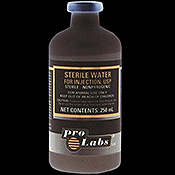
5. A sterile 0.22 micron or smaller syringe filter, if you want to get by on the cheap. I recommend a nalgene media bottle filter system or a similar brand. The Nalgene filter below can screw directly on the above described glass GL-45 media bottles for easy formulation. The 0.22 micron filter will filter out most known bacteria and particulates and is the industry standard for filtering injectables. Don't use a filter membrane with larger pore size. In this case, smaller is better. A vacuum pump will be needed to properly filter solution in these units except the syringe filter type which uses a simple syringe.
syinge filter that fits on end of a syringe
6. A vacuum pump either of the electric or hand variety to suction the cs solution through a filter membrane in the above unit. Nice cheap electric units can be purchased at Harbor Freight for $100-$150 and is what I use. If you want to get buy on the cheap, buy a hand pump like below:
7. Autoclave or a pressure cooker that can achieve at least 15 psi. I like the All American brand sterilizer pictured below that will go 17-20 psi. For the money ($250-350) and compactness, it is hard to beat and has a good resell value. It can be purchased used on ebay for much savings.
8. In order to formulate such small volumes in these low percentage injectable solutions, one needs a pipette controller and an appropriate pipette. This is a must if you want to add Hydrogen peroxide to your colloidal silver solution. If you only want an ionic silver solution, you can get by without having one. Example:


Procedure to formulate an injectable Ionic (colloidal) silver solution:
1) Sterilize by placing all glassware you plan to use along with your empty 500 ml glass media bottle or appropriate glass vial into an autoclave or pressure cooker to sterilize, along with any other items which you may use and should be sterilized. If you use a kitchen type of pressure steam cooker, make sure that this utensil can achieve at least 15 psi. You will place your bottle or bottles and all other glassware on their side, along with matching autocalvable bottle caps---all above the water line via some type of metal rack. Only steam must come in contact! One should not attempt to sterilize bottles sitting straight up, plus caps should not be on them. Jars standing upright tend to trap air and are hard to sterilize. They should either be inverted or placed on their sides. Place the empty bottle and caps on their side. Seal the cooker and heat until a steady stream of steam comes out of the top outlet. It is important to make sure that steam pushes all trapped air out of the cooker before beginning the sterilization cycle. Once you get a steady stream of steam, seal escape valve and place on the weight or start monitoring temperature with steam at 15-21 psi for 30 minutes depending on system mechanics. Be sure to allow for cooling before opening. As soon as the seal is cracked, you should hurry and use as aseptic technique as possible under the circumstances, i.e. speed with gloved hands and sterile forceps in a dust free environment. Prolonged contact with outside air will open up chances of contamination. Condensed water on the bottles and caps should be no big problem.
Remove the sterilized glassware from the cooled pressure cooker via rubber gloves or forceps. Placing the matching sterilized caps on to maintain sterility of inner bottles in the outside setting until they are ready to fill.
2) Next, take your 250 ml jug of sterile water and with a screw driver, gently pry up the crimped edge of its metal cap at the bottom and lift it off leaving the rubber septum in place. I do this because I will want to reuse the cap and original bottle of the sterile water. If you don't want to go that route, discard the empty sterile water jug and plan to use a sterile media bottle as described above instead. This is acceptable.
Pour the contents into a sterilized mason pint jar, placing the Silver Puppy unit on top and begin a colloidal silver cycle to place silver ions into the sterile water. Only one cycle is desired to give an approximately 12 ppm concentration.
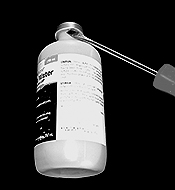
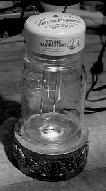
3) Once you have a colloidal silver solution finished in the mason jar, pour it into a Nalgene filtration type unit with a 0.22 micron membrane filter or smaller, hook up to your vacuum pump via tube and filtrate the CS solution into a sterile 500 ml media sterilized jar.

4) Once your CS is filtrated, pour the finished product back into the empty sterile water jug from where it came. While waiting for this to happen, you would have recapped the empty sterile water bottle with the septum to maintain sterility.
If you want to add Hydrogen peroxide to this solution, now is the time to do it. If you only want an ionic silver solution, then, replace the rubber septum and re-affix the metal septum cap which you previously took off with a screw driver and carefully re-crimp the raised edge with a larger flat screw driver to permanently reattach cap.
If you want to add Hydrogen peroxide to your ionic solution, I would shoot for a 0.0375% concentration in my ionic solution. Using the common 35% food grade Hydrogen peroxide as your stock solution, you would do the following to get .0375% injectable concentration:
For the .0375% solution of a 250cc volume you would add 0.268 of a ml of the 35% stock solution to 250cc of sterile water. Yes, to be correct you would only use 249cc and a bit of water, but the volume is so small and the concentration not that vital that just rounding the water off to a full 250cc to get roughly your 0.0375% of Hydrogen peroxide is acceptable.
In order to formulate such small volumes in these low percentage injectable solutions, one needs a pipette controller and an appropriate pipette ( a pipette that will allow you to measure in one thousandth of a milliliter:
0.268 ml. of hydrogen peroxide to be exact,
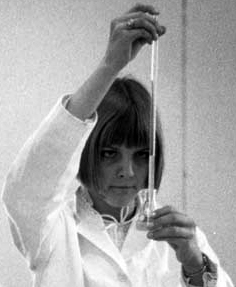
using a pipette to measure small volumes
Using a flat screwdriver to re-crimp the septum cap back to the way it was.
Finished and back to the way it was as an unopened cap. Ready to inject.
When working with injectables, it is always a good policy to formulate in as sterile conditions as possible. Accordingly, I use a lab glovebox similar to the above which I made and will keep your materials isolated from contamination form the outside air. It can be made cheaply and I have a webpage detailing construction.







